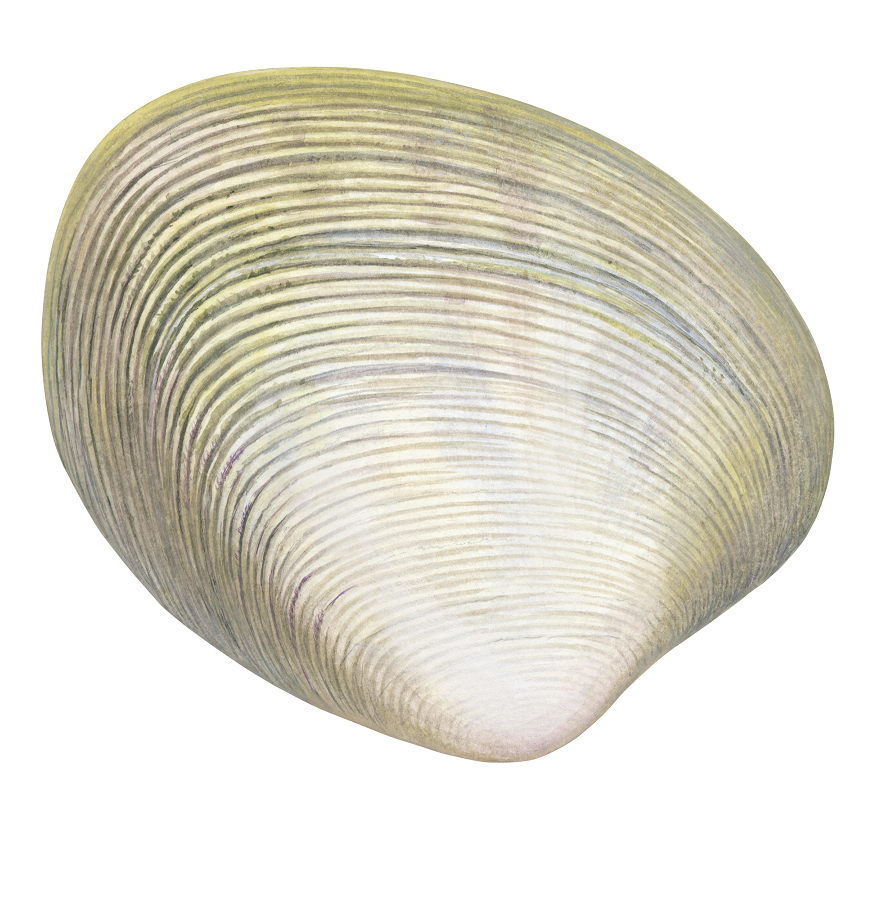Status
Venus Clam
Venerupis largillierti

Illustration©R.Swainston/anima.fish
2023 Venus Clam Status
| Stock Status | DEPLETED | ||
| Stock | Georges Bay Venus Clam Fishery | ||
| Indicator(s) | Biomass surveys, CPUE, catch | ||
In the southern zone of the fishery, due to a significant biomass reduction there has been a fishery closure in place since 2013 and fishing has now ceased with the licence having lapsed. The sudden decline in biomass was attributed to prolonged rainfall in the bay’s catchment during 2011 (Tarbath and Gardner 2013), which led to low salinity levels and extensive mortality of the ‘Venus Clams’ population. A survey conducted in 2013 indicated there was no fishable stock, although a juvenile cohort (mode 15–19 mm) was present, which was expected to grow to legal size within two years (Tarbath and Gardner 2013). However, there has been no indication of any stock recovery to date which may be linked to the environmental changes within the bay accentuated by the extensive development of seagrass beds on the previously productive sand spits.
In the northern zone of the fishery, surveys have been conducted irregularly (every 2-5 years) since 2007, with TACCs determined from the biomass estimate up to a maximum harvest fraction of 10 per cent (TAFI 2009, Tarbath and Gardner 2012, 2013, 2014). Biomass estimates were at their peak level in 2012 and 2014 with 537 and 467 t (Tarbath and Gardner 2014). Following this, severe reductions in CPUE were observed in 2015 resulting in a reduction of the TACC from 46.3 t to 3 t in 2016. The following biomass survey in 2017 estimated a 85% biomass reduction to 76.2 t (95 per cent C.I. 54.7 t to 97.6 t), with 65 per cent (49.4 t) of the biomass was above the legal size limit of 40 mm (Keane and Gardner 2017).
Despite a prolonged period of only negligible catches, the most recent 2022 biomass estimate showed a further decline to 10.0 t (95 per cent C.I. 4.2 t to 12.6 t), which is less than 5% of the peak value. The decline in biomass is likely attributed to ecological change in the estuary; recent harvest volumes in this fishery have been low. Observed changes include a doubling of native oyster (O. angasi) biomass between 2016 (4.7 kg/m2; Jones and Gardner, 2016) and 2021 (10.0 m2; Keane, 2021), as well as increase in seagrass densities over key Venus Clam beds. If high abundances of native oyster and seagrass persist in the estuary, there will be continued negative pressure on Venus Clam stocks. The above evidence indicates that the stock is currently in a depleted state.
Northern zone TACCs have been set on the basis of the biomass estimate with a maximum harvest fraction of 10 percent. Since the significant biomass and CPUE decline in 2015 the TACC has remained below 5 t and significantly undercaught with catches of less than 3 t. In the last three years catches have been below 1 t. Despite this extended period of low catch and exploitation rate there has been no sign of recovery, likely due to the aforementioned ecological factors. On the basis of the evidence provided above, the Georges Bay Venus Clam Fishery (Tasmania) management unit is classified as a depleted stock.
Learn more about what each stock status classification means on our Stock Status Classifications Information Page:



